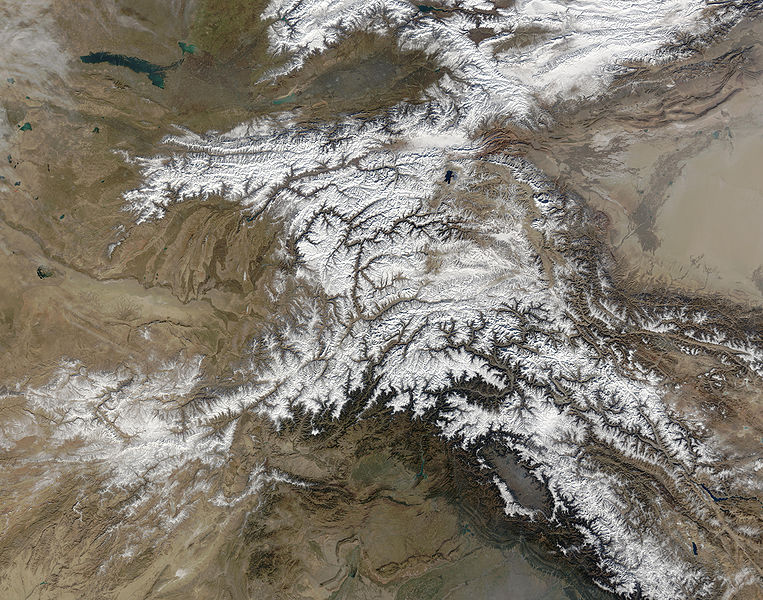Акс:Hindu Kush satellite image.jpg

Андозаи ин пешнамоиш: 763 × 600 пиксел. Дигар кайфиятҳо: 306 × 240 пиксел | 611 × 480 пиксел | 978 × 768 пиксел | 1 280 × 1 006 пиксел | 2 560 × 2 011 пиксел | 5 600 × 4 400 пиксел.
Акси аслӣ ((5 600 × 4 400 пиксел, ҳаҷми парванда: 5,01 Мбайт, навъи MIME: image/jpeg))
Таърихи файл
Рӯи таърихҳо клик кунед то нусхаи марбути парвандаро бубинед.
| Таърих | Бандангуштӣ | Андоза | Корбар | Тавзеҳ | |
|---|---|---|---|---|---|
| нусхаи феълӣ | 04:39, 6 июни 2006 |  | 5 600 × 4 400 (5,01 Мбайт) | Avenue | {{Information |Description=The Hindu Kush occupies the lower-left-center of this true-color MODIS satellite image, acquired 28 November 2003. |Source=[NASA's Earth Observatory http://earthobservatory.nasa.gov/Newsroom/NewImages/images.php3?img_id=16411] | |
Пайвандҳо
Саҳифаҳои зерин ба ин акс пайванданд:
Истифодаи саросарии парванда
Викиҳои дигари зерин ин файлро истифода мекунанд:
- Истифода дар bcl.wikipedia.org
- Истифода дар bn.wikipedia.org
- Истифода дар ca.wikipedia.org
- Истифода дар el.wikipedia.org
- Истифода дар en.wikipedia.org
- Истифода дар es.wikipedia.org
- Истифода дар et.wikipedia.org
- Истифода дар eu.wikipedia.org
- Истифода дар fa.wikipedia.org
- Истифода дар fi.wikipedia.org
- Истифода дар it.wikipedia.org
- Истифода дар mk.wikipedia.org
- Истифода дар ml.wikipedia.org
- Истифода дар mr.wikipedia.org
- Истифода дар nl.wikipedia.org
- Истифода дар nn.wikipedia.org
- Истифода дар pa.wikipedia.org
- Истифода дар pl.wikipedia.org
- Истифода дар pnb.wikipedia.org
- Истифода дар pt.wikipedia.org
- Истифода дар ro.wikipedia.org
- Истифода дар sk.wikipedia.org
- Истифода дар sl.wikipedia.org
- Истифода дар sr.wikipedia.org
- Истифода дар ta.wikipedia.org
- Истифода дар th.wikipedia.org
- Истифода дар uz.wikipedia.org
- Истифода дар vi.wikipedia.org


